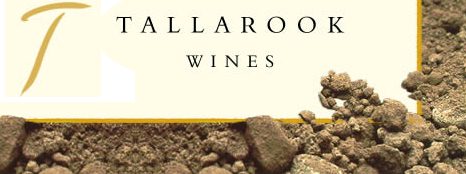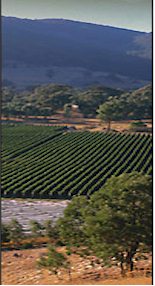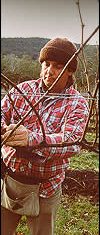


The original Tallarook Vineyards form part of a property named Dabyminga. Established first in the 1980s and purchased in 1992 by the Riebl family, these vineyards and the wines produced under the Tallarook label represent a pioneering effort for the Tallarook district. The land was once part of the territories of the Goulburn Aboriginal tribes. Before white settlement, it was one of the most densely populated areas in Australia. Dabyminga derives from "Ab'minga" (snaketracks) in the language of the Natramboolok tribe. In the same language, Tallarook means "call of the wattlebird".

Victoria's colonial heritage brought with it large sheep runs in the area, an expanding settler community - including the notorious Kelly Clan - and of course, the famed Wild Man of Tallarook. Eventually known as Henricke Nelson, this elusive character lived a lonely existence in the hills of the Brown and Tallarook Ranges. One of his hiding places - a cave - can still be found on the grounds of the present day property. In more recent times, the historic sheep run was recreated by Porsche Cars Australia, designed to become an International Racing and Entertainment Centre.
The original small vineyard was intended to become one of the many attractions for international visitors to Porsche Park. With the latest change in ownership to the Riebl family, the vineyard has prevailed over racing tracks and has grown to some 40 acres Since the late 1990s, other vineyards have been planted in the Tallarook area, with the best of them expected to make a valuable contribution to Tallarook.
The north-easterly aspect of the vineyards leads to earlier warming of the soils in spring, and with it earlier. In summer and autumn, days are hot, and nights are cool, reflecting the macroclimate of the region. The ranges are composed of sedimentary ironstone, which has weathered to form gravelly loams and light clays. It is here that Shiraz, Marsanne, Viognier and Rousanne thrive. Freely draining soils of low to moderate fertility produce low-cropping vines. Full ripeness is achieved without sacrificing flavour definition, spiciness and the highly aromatic qualities for which wines from Tallarook are becoming renowned.

The vineyard is conceptually broken into relatively small, uniform management units. This is made necessary by the variability of soil types and mesoclimates. Differences between these units are in some cases further accentuated by multi-clonal plantings. On the other hand, canopy and irrigation management are employed to balance vines in any given position, aiming for maximum development of ripe fruit characters, preferably at about the same time.
All grapes for premium wines are hand harvested at optimum maturity levels, then pressed and vinified separately. The Chardonnay, sourced from multiclonal plantings on hornfels and ironstone gravel, is hand harvested, barrel fermented with yeasts, and matured in French oak for 12 months. Partial fermentation and extended contact create smoothness and complexity. Marsanne is grown to ironstone clays. It is hand-harvested, barrel fermented, then kept on yeast to undergo partial fermentation before, further barrel storage and bottling after 18 months. Pinot Noir is grown on hornfels derived loams, undergoes pre-fermentation cold maceration, fermentation in small open vats and maturation in French oak. Hornfels, ironstone and granite all contribute to the soils of the Tallarook Shiraz vineyards. The fruit is gently destemmed and crushed, followed by fermentation with Marsanne and Viognier in small open vats. Some barrel fermentation is followed by maturation in French oak.
"Dr Luis Riebl and his wife Susan first planted vines at Tallarook, a cool elevated site on the northern slopes of Australia's Great Dividing Ranges in the mid 1980s. Their vineyards are now planted to Shiraz, Chardonnay, Marsanne and Pinot Noir. The consultant wine maker is Martin Williams, whose impressive CV takes in periods at such famous Australian companies as Hardy's, Petaluma, Rosemount and Tarrawarra. His qualifications include a BSc in Theoretical Chemistry, an MSc in Viticulture and Enology and a Master of Wine!" -Wine UK
